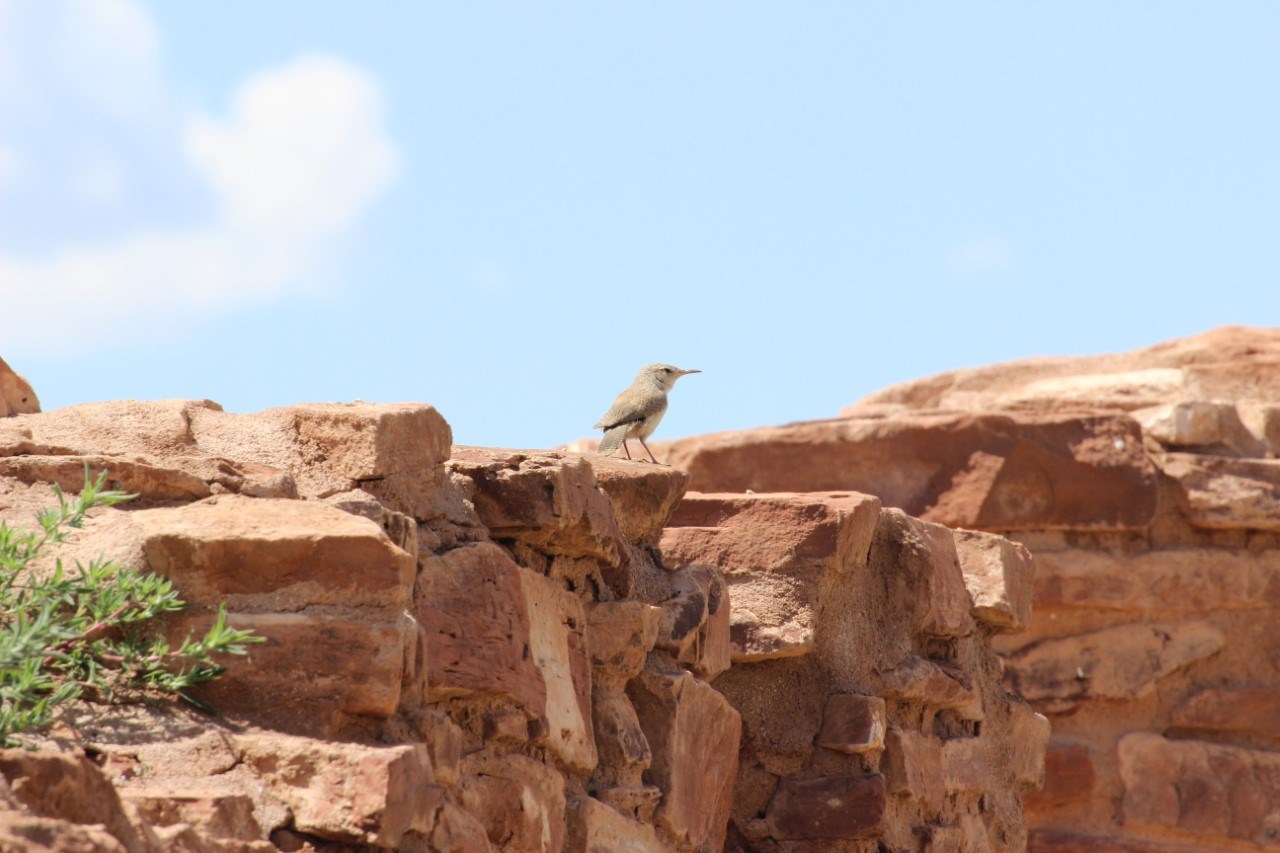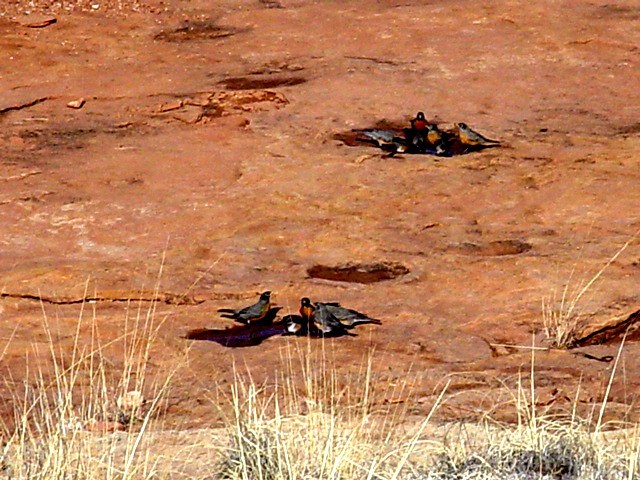
NPS Photo/Adair Bock 
NPS Photo/Murt Sullivan By Hart Schwarz With edits by Adair Bock and Bethany Burnett By National Park standards Salinas has modest dimensions, scarcely exceeding 1000 acres, and even these are not contiguous, but split into three units spaced as far as 35 miles apart. And yet, while considerable diversity of birds and habitats might have been expected in such a scattershot park, the homogeneity of habitat in this piñon/juniper life zone is a decidedly unifying factor, which allows the Salinas bird list to be broadly applicable to all three units. Still, each of the units (Gran Quivira, Quarai, and Abó) has its distinctive signature, dependent in large measure on the availability of wetland resources. Amazingly, in seven short years (1996-2002) more than 150 bird species were documented for Salinas. And if you're looking for birds, Quarai is the place to find them. Quarai (6,600 ft.): Early bird records are scarce for Salinas, and, when extant, pertain mainly to Gran Quivira, which, as the only unit with federal Monument status until 1980, attracted most of the research efforts. Thus, early on, the birds of Salinas were seen through the monochromatic prism of GQ, where the absence of water made for relatively low bird diversity. However, recent ornithological investigations since 1996, have revealed extraordinary biological riches at Quarai, where perennial waters support cottonwoods and other riparian vegetation, including many fruiting shrubs--and as a result, a wide variety of birds. This year, a pair of Cooper's Hawks nested along the Spanish Corral Trail, and Great Horned Owls nested in the ruins. One of the latest spring arrivals can be the somberly-clad, but very stylish Phainopepla, which here at Quarai is at the northern limit of its range. Eggs are generally laid during the latter part of June, with young generally fledging by the end of July when chokecherries and currants begin to ripen. Other nesting birds at this oasis on the edge of the Manzano Mountains, include Ladder-backed Woodpecker, Western Wood-Pewee, Say's Phoebe, Plumbeous Vireo, Rock Wren, Western Bluebird, Mountain Bluebird, Yellow-breasted Chat, Western Tanager, Black-headed Grosbeak, Blue Grosbeak, and Lesser Goldfinch. Song Sparrows and White-crowned Sparrows are indicators of the winter season, which, although much subdued compared to the hectic pace of summer, may feature such interesting visitors as the Virginia Rail or the Marsh Wren. While summer and winter have a certain predictability about them, migration at Quarai is the deck containing the Joker that can make the most far-flung hope a reality. Because Quarai can be such a vortex of birds in spring and fall, the Park Service and the Forest Service have joined to celebrate World Migratory Bird Day here since 1998. Already 92 species have been recorded on that second Saturday in May between 1998-2002. This list includes fifteen species of warblers, of which the Blue-winged and the Chestnut-sided are, perhaps, the most distinguished. Click here to see the cumulative World Migratory Bird Day list for Quarai. |
Last updated: February 27, 2021
